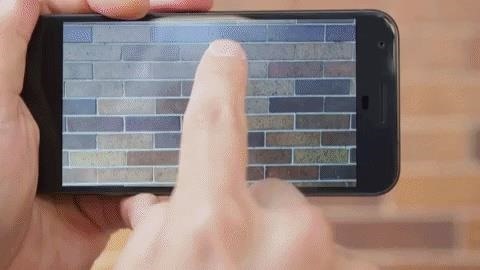This morning Google announced ARCore, an SDK for Android devices that will allow augmented reality developers to add new functionality to Android 7.0 and up, all without any special hardware other than the camera of a phone.
While Apple released ARKit into beta at WDCC a few months ago, it is worth noting that the capabilities of ARCore already surpass what ARKit offers.
With the ARKit, developers can track a horizontal surface. This is great for putting things on tables or living room floors but leaves out about half of the surfaces in the world. ARCore, can not only track upward facing surfaces but it can track ceiling — or downward facing surfaces — multiple vertical surfaces, and even slanted surfaces like ramps.

On top of that, the API adds a light detection capability that will help solidify the presence of the holograms being viewed.
Looking through the API reveals an intent to extend its capabilities further, and track more than one surface, which will further widen the gap between Apple's and Google's versions of the software. Of course, Apple likely has the same intentions, but they just have not let it be known.

Shortly after Google's announcement, Unity revealed they have incorporated ARCore capabilities into the newest beta, released this morning, in version 2017.2.0b9. Unity and Google only recently announced Tango capabilities which were added to Unity in 2017.2.0b1, the first version of the beta a few weeks earlier.
For those that don't follow Google products, Tango is the name of a hardware set that Google has been working on for a few years. Lead by NR50 member, Johnny Lee, Tango — a considerably far more sophisticated solution to spatial recognition — has been slowly working its way into some of the existing smartphones. Unfortunately, the rate has been too slow, too few. And as developers, we have to go where the people are or soon will be.
Considering, with ARCore, Google is adding new functionality to existing technology, the implications for our current range of devices running Android could be amazing. Unlike Apple's mobile OS, Android, being from the open source standard, is being used to power many devices other than smartphones, tablets, and laptops. Will these devices soon be able to add a piece of hardware, like a camera and join our AR existence?

Companies like Osterhout Design Group, who make smartglasses running versions of the Android OS, will likely benefit heavily from this news.
ARCore is a great thing for us. It acts as another proof point that AR is real and further helps the Android developer community to conceptualize AR that can be seamlessly ported onto our glasses.
ODG's Qualcomm 835-based smart glasses R-8 and R-9 are supposed to be out sometime this year, and while they are not currently running Android 7.0, code-name Nougat, I can imagine the coming rustling from the engineering department as they find a way to utilize this new technology.
Just updated your iPhone? You'll find new features for Podcasts, News, Books, and TV, as well as important security improvements and fresh wallpapers. Find out what's new and changed on your iPhone with the iOS 17.5 update.























2 Comments
Killing Tango illustrates the problem with Androids ecosystem. Google can't put together a cohesive hardware option and Apple can. If iPhone 8 has RGB-D cameras it could leapfrog ARCore.
Completely true, and they own a company that makes them. We can only wait and see what is next.
Share Your Thoughts